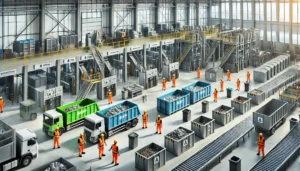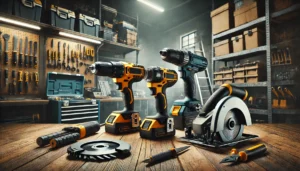Compressed air is used to transmit and control energy in pneumatic systems which are an integral component of various industries by powering machines and equipment central to operations. However, as useful as these systems are, they can consume a lot of energy leading to increased operational costs and environmental impacts. Thus, incorporating strategies aimed at enhancing energy efficiency in pneumatic systems is vital for businesses that want to reduce energy utilization, decrease funding expenses, and lessen their carbon footprint.
1. Conduct an Energy Audit
This starts with conducting an energy consumption audit. This step’s aim is to evaluate the entire pneumatic system in order to spot possible areas of energy wastage. An audit can highlight potential problems such as air leaks, unproductive components, and poor working conditions. These problems enable the business to determine the actions which would be able to provide the highest energy savings.
2. Eliminate Air Leaks
Air leaks are very much a common issue in energy loss concerning pneumatic systems. Even small leaks can have a negative impact over the long term. Regularly looking at the system for leaks and fixing them is essential for saving energy. Having a well-developed maintenance plan with special focus on leak repair ensures that the system is operating at maximum efficiency.
3. Optimize System Pressure
Keeping pneumatic systems at high pressure increases energy usage. Understanding the needs of the system and adjusting the energy and pressure consumption accordingly can do wonders in cutting down on the energy bills. The pressure settings should meet the demands of the machine without excess energy use. This will help improve the energy efficiency of the system.
4. Use Energy-Efficient Components
Components that resulted in the greatest improvement in the system performance were others such as pneumatic actuators and valves which controlled the economizer sections. The initial cost of high quality, energy efficient components is high. However, the savings achieved through decreased energy use make it worth the while.
5. Implement Variable Speed Drives
The addition of variable-speed drives in compressors allows the motors to have their speeds regulated according to the system’s needs. This is done because the compressor works only when it’s asked to, thus eradicating the energy loss that comes with the unit working on a full-power mode at all times. Compared to systems with consistent air needs, VSDs bring savings in energy for systems with changing air requirements.
6. Maintain Proper Air Quality
Impurities found in compressed air can lead many components to undergo excessive wear and tear while also affecting the overall system’s efficiency. Having proper filtration and drying systems guarantee that the compressed air is clean and dry, which improves the lifespan of the components as well as the efficiency of the system as a whole.
7. Schedule Regular Maintenance
Scheduled maintenance is very important when making sure that the system’s components are in good condition. Routine maintenance of the system, including filter checkup, lubrication of the moving parts, and hose and fitting inspection, can ensure no low-efficiency energy problems arise. A system that has been well maintained operates at a greater efficiency and for much longer especially for well maintained systems.
8. Train Personnel
The understanding of energy effectiveness among operators and maintenance personnel is critical. Staff training helps to improve identification and resolution of problems such as improper equipment usage, failure to report equipment issues, and other problems such as air leaks. Such helps to improve maintenance and operational practices of the pneumatic system.
9. Utilize Energy-Efficient Technologies
Low energy consuming pneumatic components and systems were developed with the advancement of solutions and materials. For example, low energy consuming actuators and valves pencils interface increase dimensional submarine productivity. Following the recent developments in technology with integration into your system provides a great deal of energy saving in the long run.
10. Monitor and Analyze System Performance
Constructing monitoring systems for the trackers of the pneumatic systems performance, also known as ‘energy consuming zones’, can offer invaluable information. This information pointed analyzing helps to uncover and understand reliable patterns alongside inefficiencies to base further decisions on. What is more, non stop tracking enables the systems operation within set parameters and timely intervention to any problems.
Conclusion
Improving the energy efficiency of pneumatic systems calls for regular maintenance schedules, systematic changes, and the installation of new energy-efficient components. These measures can help companies save energy, cut expenses, and positively impact the environment. Pursuing energy efficiency will always provide a return on investment while building a strong image of sustainable corporate citizenship.










